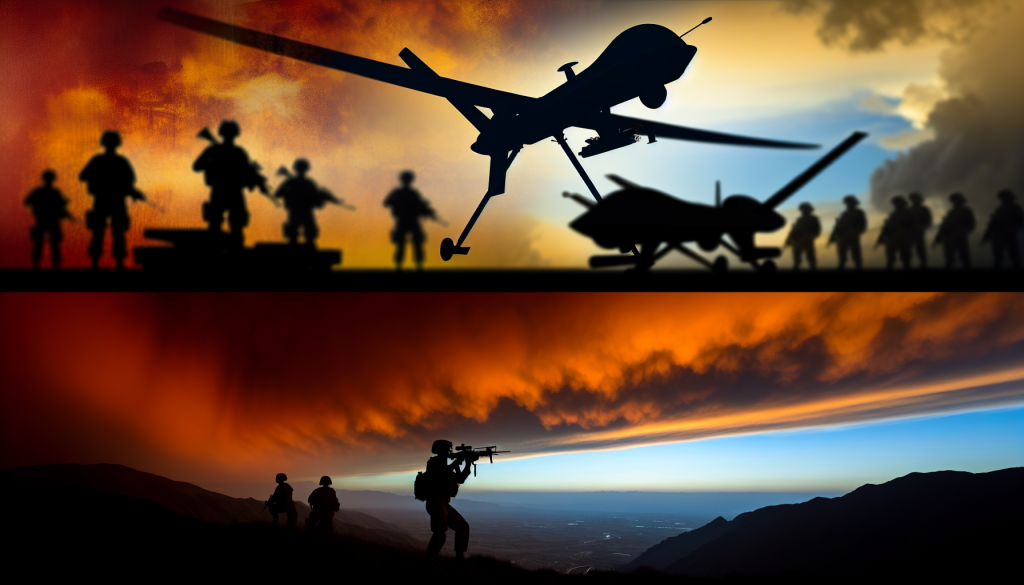The Army’s Drone Revolution: Adapting to Modern Warfare
The landscape of warfare is evolving, and the U.S. Army is taking significant steps to adapt to these changes based on lessons learned from Russia’s invasion of Ukraine. At the forefront of this transformation is the increasing dominance of drones on the battlefield, prompting a comprehensive reevaluation of tank tactics, procurement systems, and unit structures.
Rethinking Combat Tactics
In July, War Secretary Pete Hegseth issued a directive with a bold vision: every Army squad should be equipped with unmanned systems by the end of 2026. This reflects a fundamental shift in how the Army approaches combat, acknowledging that inexpensive drones are proving more effective than traditional military platforms. General Randy George, the Army Chief of Staff, noted in his June testimony to Congress that the rapid pace of technology necessitates flexibility. He emphasized the need to abandon large, cumbersome programs that can become outdated during long development timelines.
Drones as Game-Changers
Ukraine’s strategic use of surveillance drones has fundamentally altered the battlefield dynamics, eliminating traditional covers and hiding spots. According to the Modern War Institute at West Point, drones account for around 70% of Russian casualties in the ongoing conflict. Both Ukrainian and Russian forces have integrated drones comprehensively for reconnaissance, artillery spotting, and direct attacks. Ed Arnold, a security expert at the Royal United Services Institute, conveyed a stark reality: “There’s nowhere to hide on the modern battlefield.”
In response, the Army is integrating unmanned systems at an unprecedented scale. Colonel Joshua Glonek of the 3rd Brigade, 10th Mountain Division, indicated that his unit utilized more drones during a January 2025 rotation in Germany than any previous unit in combat training centers. The brigade deployed 144 experimental drones, aimed at enhancing reconnaissance and target acquisition capabilities.
Cost-Efficiency Through Drones
The economic implications of drone warfare are profound. For instance, low-cost Russian FPV and “kamikaze” drones, priced around $400, have successfully targeted M1 Abrams tanks, valued at $8-10 million each, with devastating effect. Reports indicate that direct-attack drones have led to up to 90% of Russian vehicle losses in certain sectors of the war. In June’s Operation Spiderweb, Ukraine employed up to 117 FPV drones, culminating in the destruction of 41 Russian aircraft, resulting in an estimated $7 billion in damages.
Recognizing the urgency, Army leaders assert the need for a robust domestic production capacity. Plans are underway for the Army to manufacture upwards of 10,000 small drones monthly, starting in 2026.
Innovative Procurement Strategies
The U.S. Army is also drawing valuable insights from Ukraine’s approach to drone procurement. The Ukrainian government has established a digital procurement system known as “Brave1,” enabling front-line commanders to order drones from manufacturers with remarkable speed. This system allows military units to browse a digital marketplace and order necessary equipment just as easily as shopping online.
Ukrainian drone units accrue points based on the value of targets destroyed, which can then be redeemed for more advanced drones. This innovative framework incentivizes effectiveness and agility, qualities that U.S. military officials are keen to replicate.
Rethinking Tank Roles
The increasing drone threat has compelled a reevaluation of how the Army’s heavy platforms are utilized. Secretary of the Army Daniel Driscoll highlighted that the plethora of battlefield sensors necessitates that tanks cannot be deployed as aggressively as before, as inexpensive drones can doom them from the skies.
Plans are emerging to transform tank battalions into leaner formations, with drones being used to identify threats and clear pathways before armored units advance. This strategic shift aims to protect valuable assets from enemy drones, particularly in light of both Ukrainian and Russian tank losses during the ongoing conflict.
New Units for a New Era of Warfare
In a significant operational change, the Army is forming entirely new units centered on drone warfare. The 10th Mountain Division’s 3rd Brigade has recently tested three “strike companies,” each comprised of 80 soldiers and designed to operate ahead of battalions. These companies integrate a scout platoon, mortar platoon, and drone unit, equipped with surveillance drones, loitering munitions, and counter-drone systems.
There’s a focus on integrating advanced technology into these new formations, including Anduril Ghost drones and Switchblade 600 loitering munitions. The intent is to redefine battlefield dynamics, emphasizing the need for drones as primary combat systems.
Empowering Soldiers on the Ground
Ultimately, these sweeping changes are shifting the skill sets required of soldiers. By the end of 2026, each squad will be equipped with small drones as standard gear, alongside traditional weapons. The Army has initiated a comprehensive training program, launching its first official drone course at Fort Rucker, Alabama. This course teaches soldiers not only to operate drones but also to build and repair them in combat scenarios, fostering an adaptable and resilient force.
Training efforts are rapidly scaling across the Army, already incorporating company-level drone training and live-fire exercises for rotating units in Europe. Soldiers now practice flying drones through obstacle courses and engage in simulated combat scenarios, honing skills essential for modern warfare.
As the battlefield continues to evolve, so too does the training and capacity of the U.S. Army, ensuring that soldiers are equipped with the necessary tools to navigate future challenges effectively.

